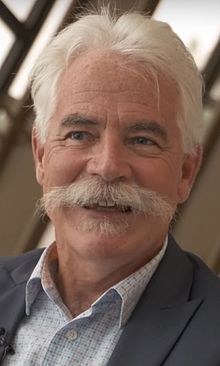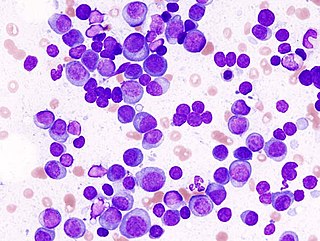
Multiple myeloma (MM), also known as plasma cell myeloma and simply myeloma, is a cancer of plasma cells, a type of white blood cell that normally produces antibodies. Often, no symptoms are noticed initially. As it progresses, bone pain, anemia, renal insufficiency, and infections may occur. Complications may include hypercalcemia and amyloidosis.

WEHI, previously known as the Walter and Eliza Hall Institute of Medical Research, and as the Walter and Eliza Hall Institute, is Australia's oldest medical research institute. Sir Frank Macfarlane Burnet, who won the Nobel Prize in 1960 for his work in immunology, was director from 1944 to 1965. Burnet developed the ideas of clonal selection and acquired immune tolerance. Later, Professor Donald Metcalf discovered and characterised colony-stimulating factors. As of 2015, the institute hosted more than 750 researchers who work to understand, prevent and treat diseases including blood, breast and ovarian cancers; inflammatory diseases (autoimmunity) such as rheumatoid arthritis, type 1 diabetes and coeliac disease; and infectious diseases such as malaria, HIV and hepatitis B and C.
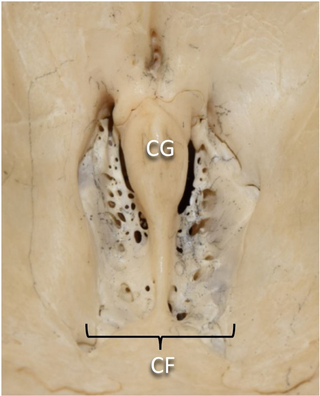
In mammalian anatomy, the cribriform plate, horizontal lamina or lamina cribrosa is part of the ethmoid bone. It is received into the ethmoidal notch of the frontal bone and roofs in the nasal cavities. It supports the olfactory bulb, and is perforated by olfactory foramina for the passage of the olfactory nerves to the roof of the nasal cavity to convey smell to the brain. The foramina at the medial part of the groove allow the passage of the nerves to the upper part of the nasal septum while the foramina at the lateral part transmit the nerves to the superior nasal concha.

The Eureka Prizes are awarded annually by the Australian Museum, Sydney, to recognise individuals and organisations who have contributed to science and the understanding of science in Australia. They were founded in 1990 following a suggestion by science journalist Robyn Williams.
Michael S. Kaplan is an American biology researcher, medical professor, and clinical physician.
Alan Osborne Trounson is an Australian embryologist with expertise in stem cell research. Trounson was the President of the California Institute for Regenerative Medicine between 2007 and 2014, a former Professor of Stem Cell Sciences and the Director of the Monash Immunology and Stem Cell Laboratories at Monash University, and retains the title of emeritus professor.
The Sir William Dunn School of Pathology is a department within the University of Oxford. Its research programme includes the cellular and molecular biology of pathogens, the immune response, cancer and cardiovascular disease. It teaches undergraduate and graduate courses in the medical sciences.

Olfactory ensheathing cells (OECs), also known as olfactory ensheathing glia or olfactory ensheathing glial cells, are a type of macroglia found in the nervous system. They are also known as olfactory Schwann cells, because they ensheath the non-myelinated axons of olfactory neurons in a similar way to which Schwann cells ensheath non-myelinated peripheral neurons. They also share the property of assisting axonal regeneration.

Angela Jane Roskams is a neuroscientist at the University of British Columbia (UBC) with a joint appointment in Neurosurgery at the University of Washington. She is professor at the Centre for Brain Health at UBC, and directed the laboratory of neural regeneration and brain repair, before winding down her lab in 2015–16 to become Executive Director of the Allen Institute for Brain Science, and a leader in the Open Science movement. After leading Strategy and Alliances for the Allen institute's multiple branches, she has become an influencer in the fields of neuroinformatics, public-private partnerships, and Open Data Sharing.
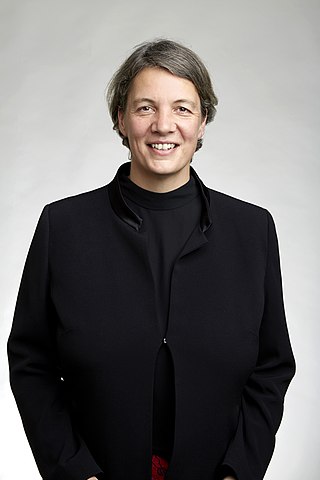
Michelle Yvonne Simmons is an Australian quantum physicist, recognised for her foundational contributions to the field of atomic electronics.
Dariusz "Darek" Fidyka is a Polish firefighter and recovering paraplegic who became the first person in history to verifiably recover sensory and motor function after the complete severing of his spinal cord.
Spinal cord injury research seeks new ways to cure or treat spinal cord injury in order to lessen the debilitating effects of the injury in the short or long term. There is no cure for SCI, and current treatments are mostly focused on spinal cord injury rehabilitation and management of the secondary effects of the condition. Two major areas of research include neuroprotection, ways to prevent damage to cells caused by biological processes that take place in the body after the injury, and neuroregeneration, regrowing or replacing damaged neural circuits.

Melissa Helen Little is an Australian scientist and academic who has served as director of Cell Biology at the Murdoch Children's Research Institute since 2019. She is also a Professor in the Faculty of Medicine, Dentistry and Health Sciences, University of Melbourne, and Program Leader of Stem Cells Australia. In January 2022, she became CEO of the Novo Nordisk Foundation Center for Stem Cell Medicine reNEW, an international stem cell research center based at University of Copenhagen, and a collaboration between the University of Copenhagen, Denmark, Murdoch Children’s Research Institute, Australia, and Leiden University Medical Center, The Netherlands.
The Australian Laureate Fellowship is an Australian professorial research fellowship awarded by the Australian Research Council. Fellows are chosen each year for five-year awards. In 2023 8 industry-focused Laureate Fellowships were awarded for the first time.
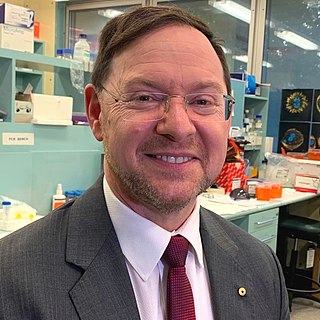
John E. J. Rasko is an Australian clinical hematologist, pathologist and scientist whose research focuses on gene and stem cell therapy, experimental haematology and molecular biology. He directs the Department of Cell and Molecular Therapies at Royal Prince Alfred Hospital, heads the Gene and Stem Cell Therapy Program at the Centenary Institute, Sydney, and is Professor of Medicine, Sydney Medical School, the University of Sydney. He is a science communicator, often interviewed on Australian radio and television, and is a regular contributor to Breakfast, Radio National, ABC. Rasko delivered the ABC's 2018 Boyer Lectures. Entitled Life Re-engineered, they examined the history and impact of gene and cell therapies.

Laura K. Mackay is an Australian immunologist and Professor of Immunology at the University of Melbourne. Mackay is the Theme Leader in Immunology and Laboratory Head at the Peter Doherty Institute for Infection and Immunity. In 2022, she was the youngest Fellow elected to the Australian Academy of Health and Medical Sciences.
Fabienne Mackay is a French Australian research immunologist and institutional leader within the Australian medical research, education and innovation sectors. She is the Director and CEO of the QIMR Berghofer Medical Research Institute since 2020, after being the inaugural Head of the School of Biomedical Sciences at the University of Melbourne during the preceding five years. She is also an Honorary Professor at the Faculties of Medicine of the University of Queensland and the University of Melbourne. Her work has attracted public attention for its contribution to the pathophysiological understanding and treatment of lupus and other autoimmune diseases. Mackay has been notably awarded, achieving international reputation for her widely cited research describing B-cell activating factor (BAFF) and other cytokines of the TNF receptor superfamily, and their roles in B cell physiology, autoimmunity and cancer. She is an elected Fellow of the Australian Academy of Health and Medical Sciences.
Lyn Robyn Griffiths is an Australian academic who serves as Distinguished Professor of molecular genetics at Queensland University of Technology, where she is director of the Centre for Genomics and Personalised Health, the Genomics Research Centre and the BridgeTech Programs. Griffiths is internationally renowned for her work in the discovery of the genetics of migraine headaches.
Carolyn Mary Sue is an Australian neurologist, scientist, professor and research director. She has been the executive director of the Kolling Institute of Medical Research since 2019 and is also Director of Neurogenetics at Royal North Shore Hospital, Director of the Centre of Excellence for Parkinson's Disease and Movement Disorders, and Director of the National Centre for Adult Stem Cell Research. Sue specialises in complex neurogenetic conditions and runs tertiary referral clinics for patients with diseases such as Parkinson's, mitochondrial diseases, and other inherited movement disorders. Her research has identified several previously unknown mutations that cause neurogenetic disease.
